5 Signs It’s Time To Repot Your Seedlings
As an Amazon Associate and member of other affiliate programs, I earn from qualifying purchases.
It’s important to be able to recognize when it’s time to transplant seedlings from the seed tray to a larger pot. Transplanting seedlings a few weeks after starting should be part of your seed-starting routine.
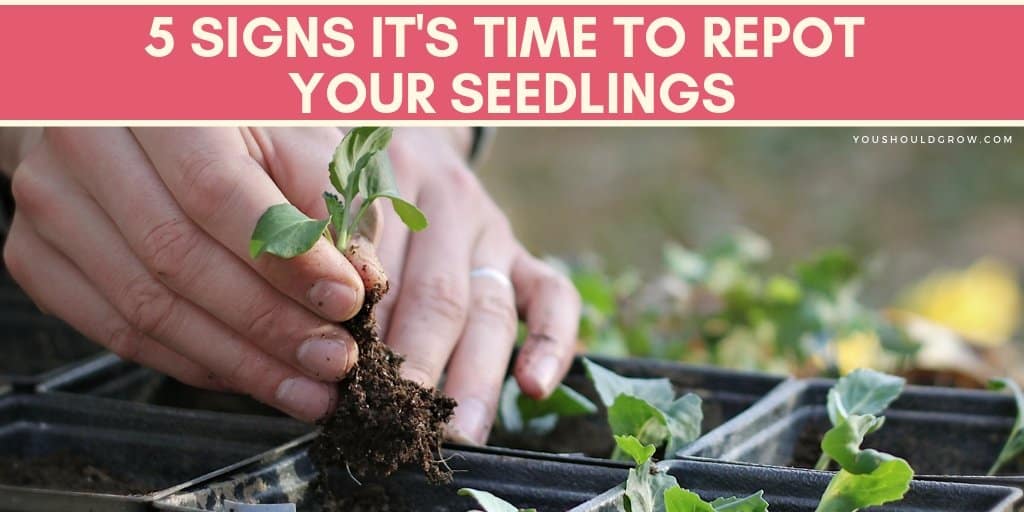
We start the seeds in smaller containers because we can control moisture and temperature much better that way, and if you’ve heard me talk much about seed starting then you know my motto is that moisture and temperature are the most important factors in getting good germination.
But once the seeds sprout, they quickly outgrow their seed starting container. It would be a bad idea to let them continue to grow in a pot that is too small. They’ll become nutrient deprived and their roots will grow round and round into a big knot.
Transplanting them into larger pots, helps them develop healthier roots and grow faster. By not restraining their growth indoors, you’re training them to grow big and strong when it’s time to put them in the garden.
But how do you know when to repot seedlings?
There are a few simple things you can look for that are dead giveaways your plants need a bigger pot.
1. They have one or two sets of true leaves
The ideal time for transplanting your seedlings is about 3 weeks after they sprout or when you have 1-2 sets of true leaves. It’s better to get them in new containers before they start to show the signs of stress listed below.
2. The cotyledons are turning yellow and falling off
Cotyledons are the first leaves that emerge from a seed. They are different than the “true leaves.” True leaves are the second and subsequent sets of leaves that grow after the cotyledons emerge.
It is normal for cotyledons to yellow and fall off, but if they’re doing it when you only have 1 or 2 sets of leaves, your plants really need to be transplanted.
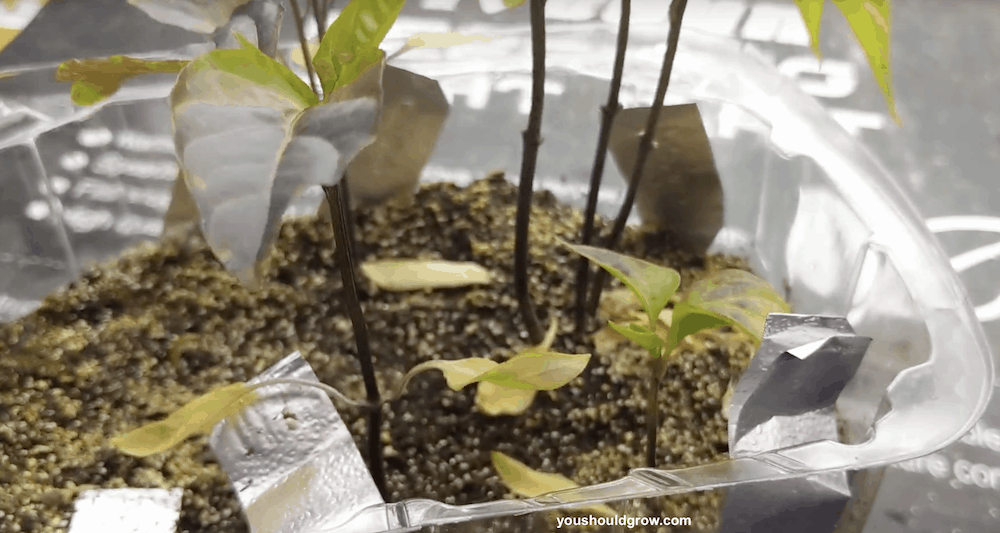
3. The true leaves are turning yellow
It’s definitely time to transplant if the true leaves are yellow. This is a sure sign that your plants are starved for nutrients.
4. The roots are wound around and around the root ball
You definitely want to see roots in your growing medium when it’s time to plant, but if they’re circling around the edges of the root ball, then they’re getting too crowded.
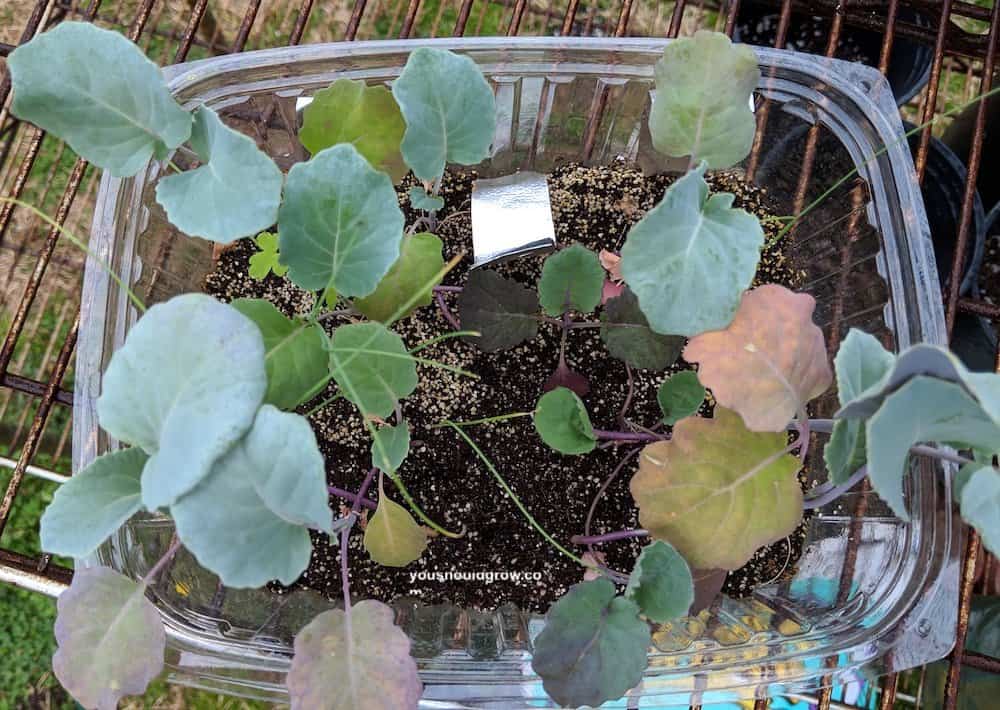
5. They’re crowded
You don’t want to overcrowd your plants when they’re young. Some plants will grow taller than others and that will affect how much light the others get. You’ll also get the larger plants sequestering all the nutrients and that will stunt the growth of your other plants as well.
Why transplant the seedlings at all?
You might wonder why we would go to the trouble of repotting seedlings at all? Why not just give them some fertilizer, or better yet, start them in a larger container to begin with?
You’ll be much more successful in germinating seeds if you start them in small containers. This allows you to have more control over the temperature and moisture in the seed starting container. We’ve found we have much better sprout rates in the smaller cell trays as compared to using other types of seed starting containers.
You can dose your plants with some fertilizer but that will stimulate growth. They’re already telling you they need more space, why stress them by making them grow bigger in the same small space?
Both of those options are viable alternatives, but you’ll have healthier plants if you transplant instead.
How to repot seedlings
Transplanting seedlings is quite easy to do. You simply need a new container and some potting mix. We recommend a container that is twice as big as what they are in now and a high-quality potting mix like Fox Farm Ocean Forest.
We like to mix the potting mix and the seed starting mix in a 50:50 ratio. This is especially helpful for young seedlings who still have tender roots.
Before filling your containers, wet down your soil mixture to ensure even watering after you plant. Then nest your seedling in the new container, filling in around the base of the plant and pressing down to seat it in well and remove air pockets.
For tomatoes, bury the stem leaving only 1 or 2 sets of leaves above the soil line. For all others, plant them level or bury the stem about 1/4 inch or less.
Water your transplanted seedlings well and place them back under the light.
What about fertilizing seedlings?
You can fertilize young seedlings after transplanting as needed. Use a liquid organic fertilizer diluted to half-strength. If they tolerate the half-strength and seem like they need more, you can up it to full strength.
Don’t fertilize your seedlings until after you transplant them. You don’t want to stimulate growth in a space that is too small.
Do you transplant or repot your seedlings?
Tell us about your experience in the comments below!
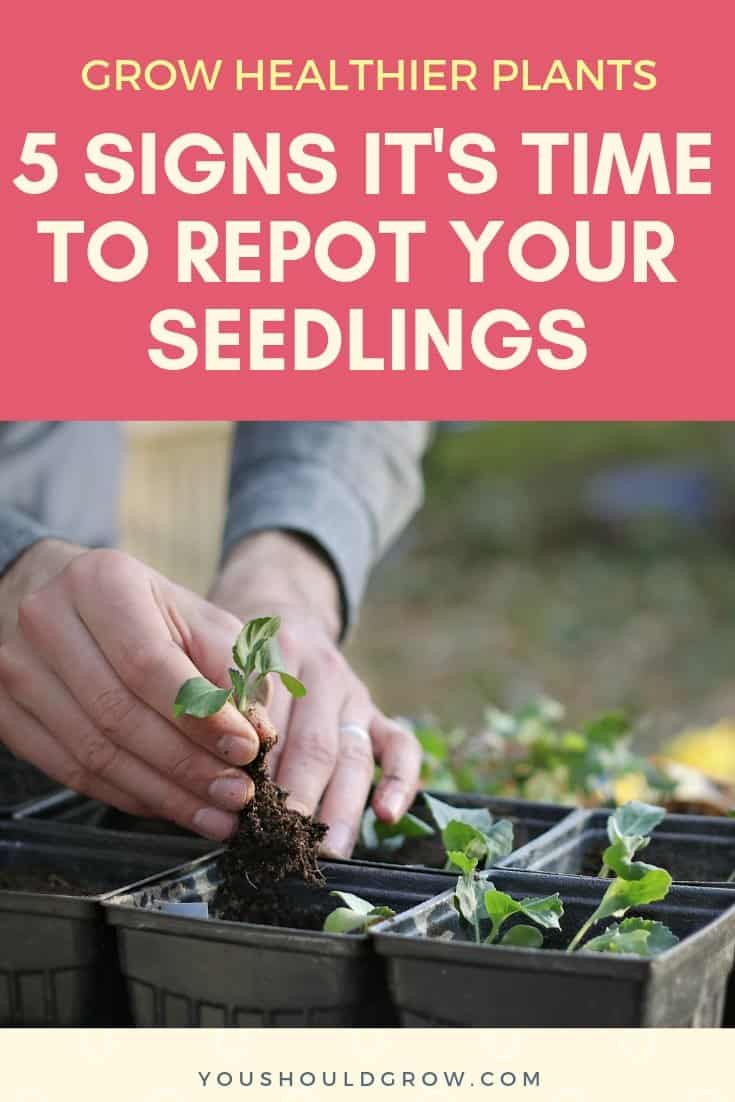




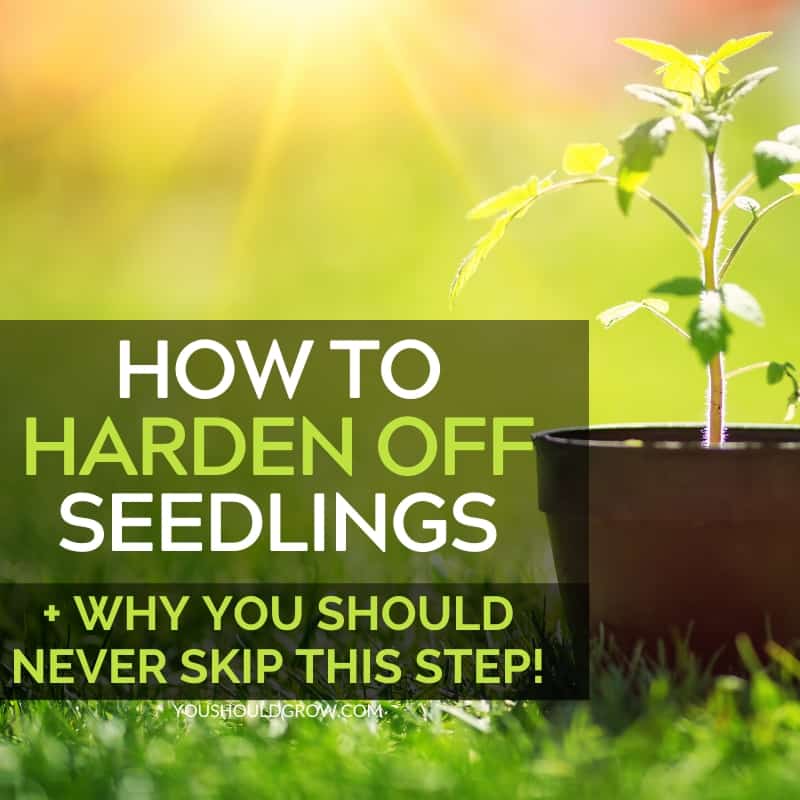
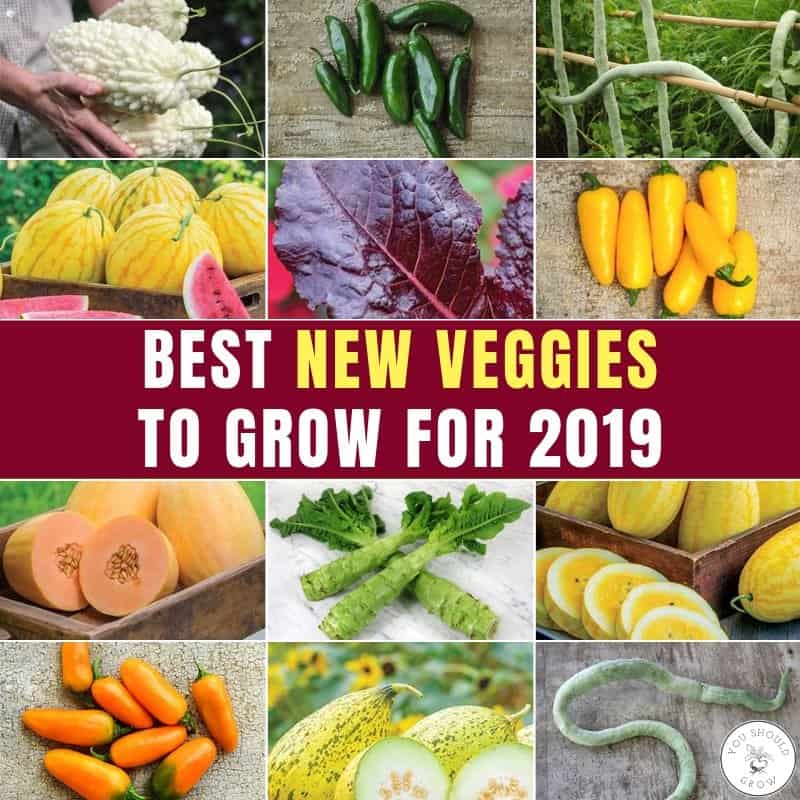
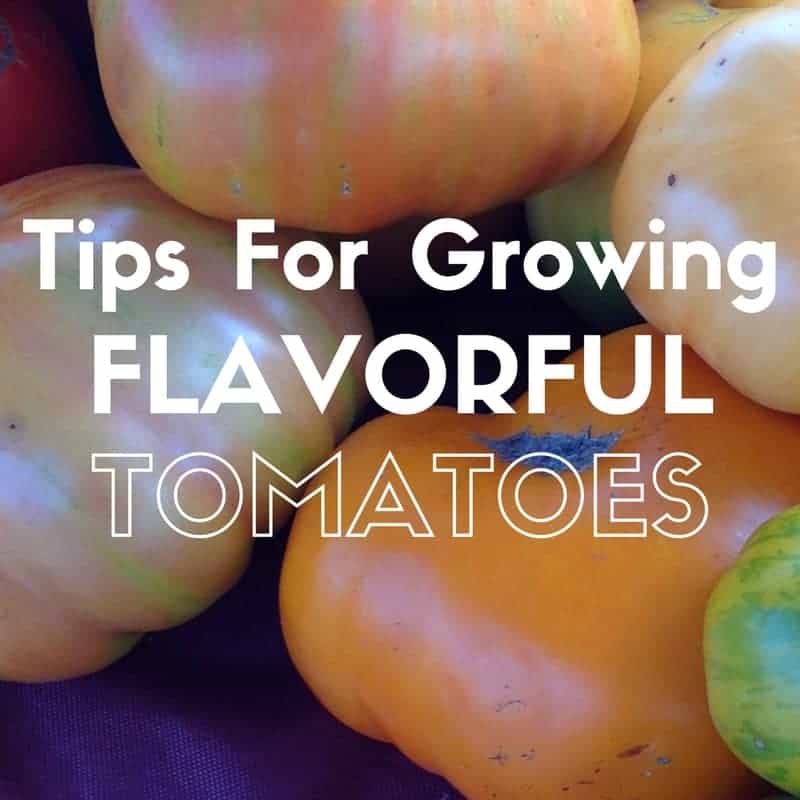
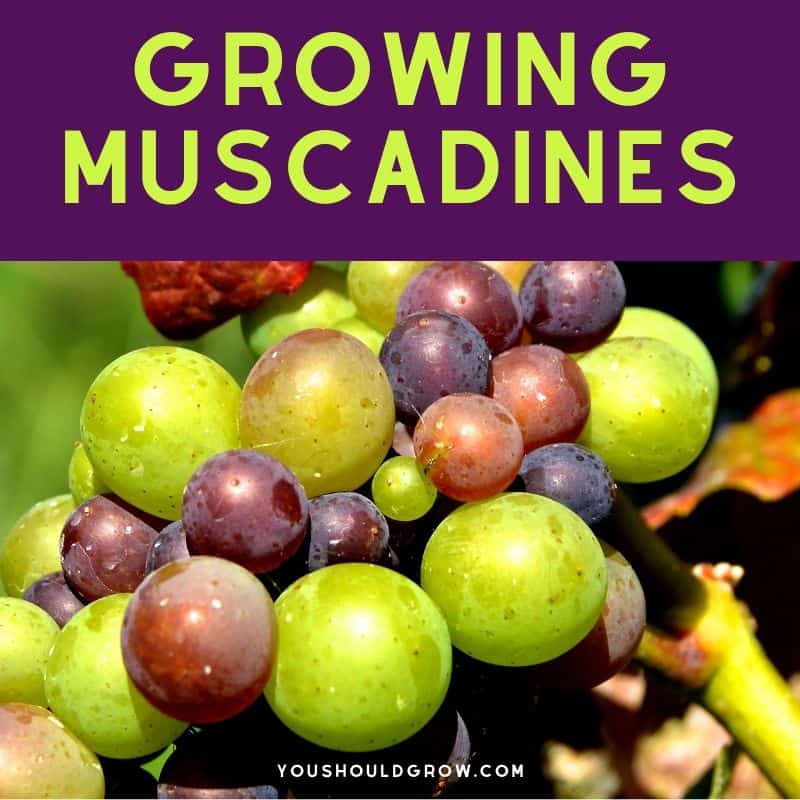
Well written, & made lots of sense good job.
My seedlings are small and haven’t grown much in a while. They are still in the peet pellets. I didn’t realize I had to replant them from the peet pellets into pots before going outside. My broccoli has some purple leaves which I am reading is due to a deficiency. I am not sure what kind of nutrients to put into them
Thank you for this well written easy to understand article.
It’s my first time at growing from seed, so far so good.
One of your pictures shows someone lifting a seedling holding on to the stem. I thought best not to do that, if still possible lift holding the cotyledons in order not to bruise the all important stem.
I use small containers about 1 sq. Inch made of natural material and plant it directly into the soil. Often there are 2 seedlings per pot. Choice to leave both or one may die off. And a bit of fertilizer.
I am growing radishes in a seed starter and they took off like crazy. It’s only day 3 and they are 3 inches tall maybe 4. There’s tins of then all together. Should I transplant them now.
I like jiffy pucks, generally I wait until I see roots showing out the bottom and sides of the puck before transplanting. Depending on the plant, I don’t use liquid nutrients until the cotyledons fall off or are at least yellowing. Also, if the seed is big enough, it r0x0rz their b0x0rz if you soak the seed in water for 24 hrs. I do this for my sunflower seeds and other plants that are now legal, and they crack open within 24 hrs of being out of the water and in a moist paper towel in a bag.